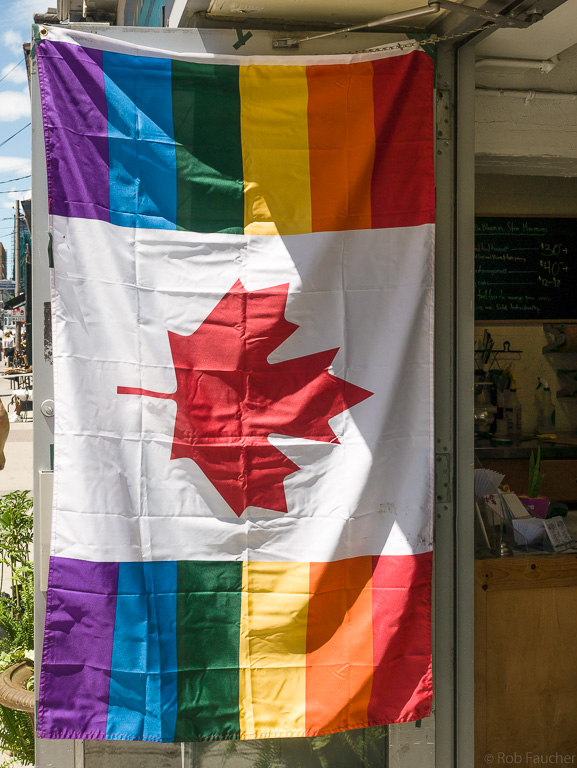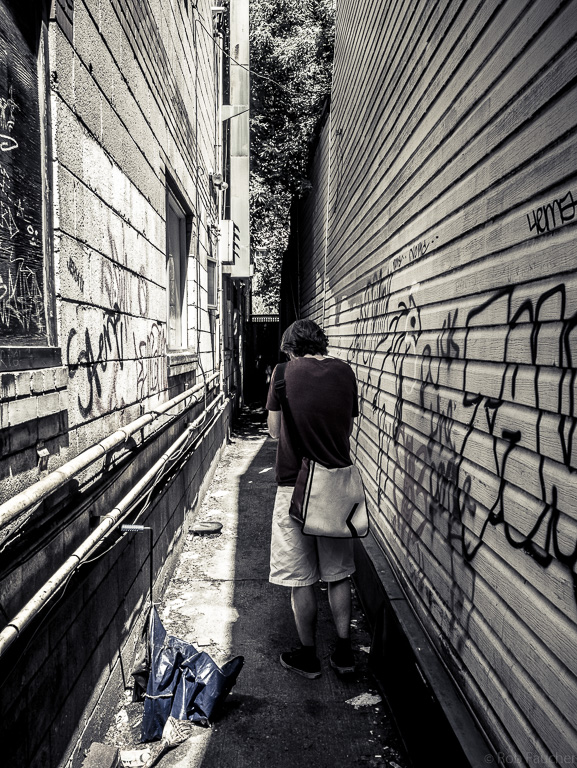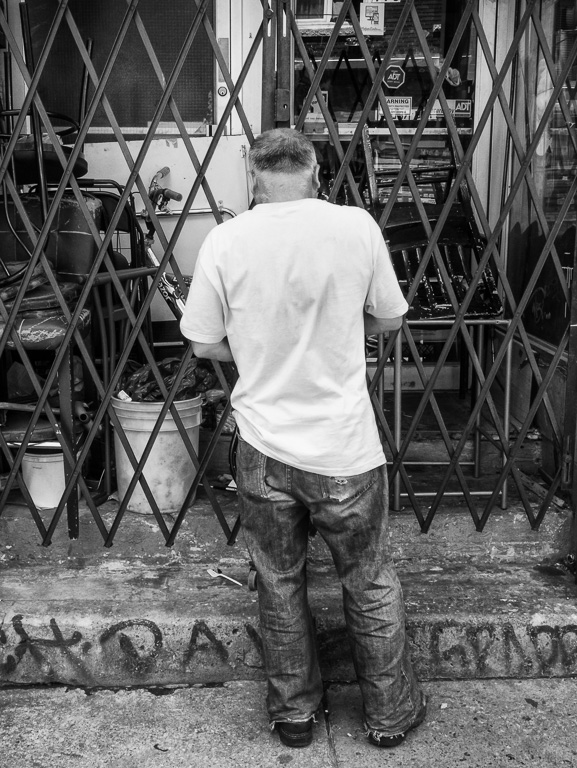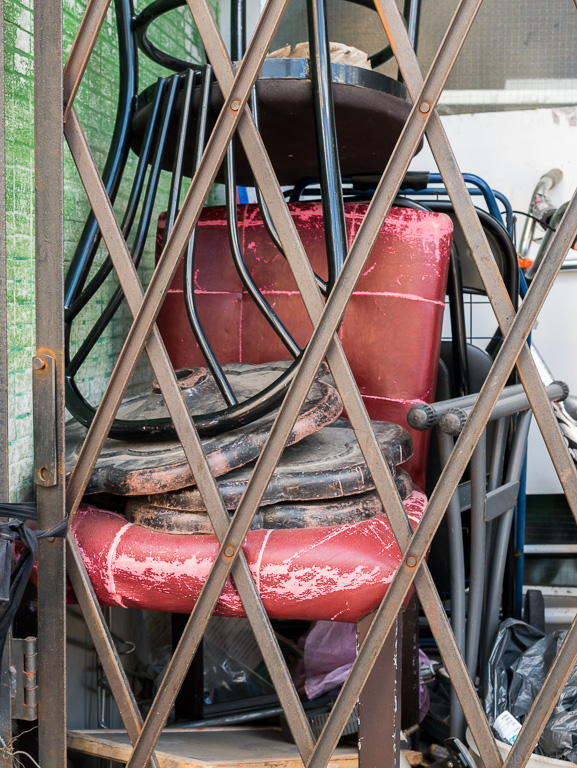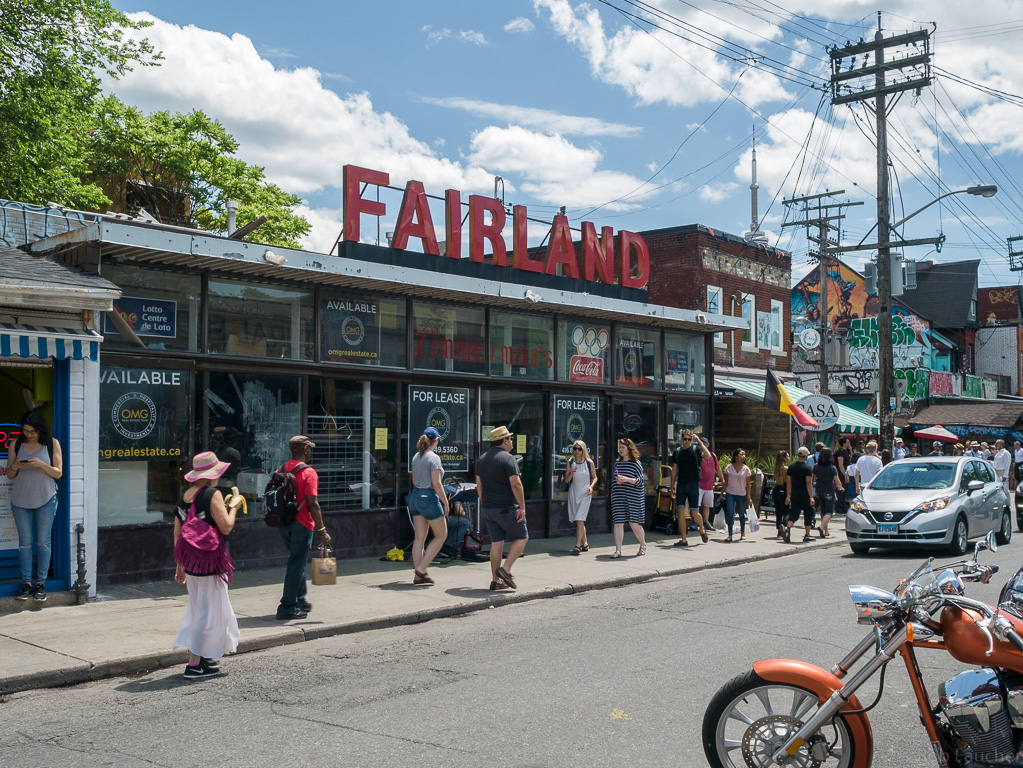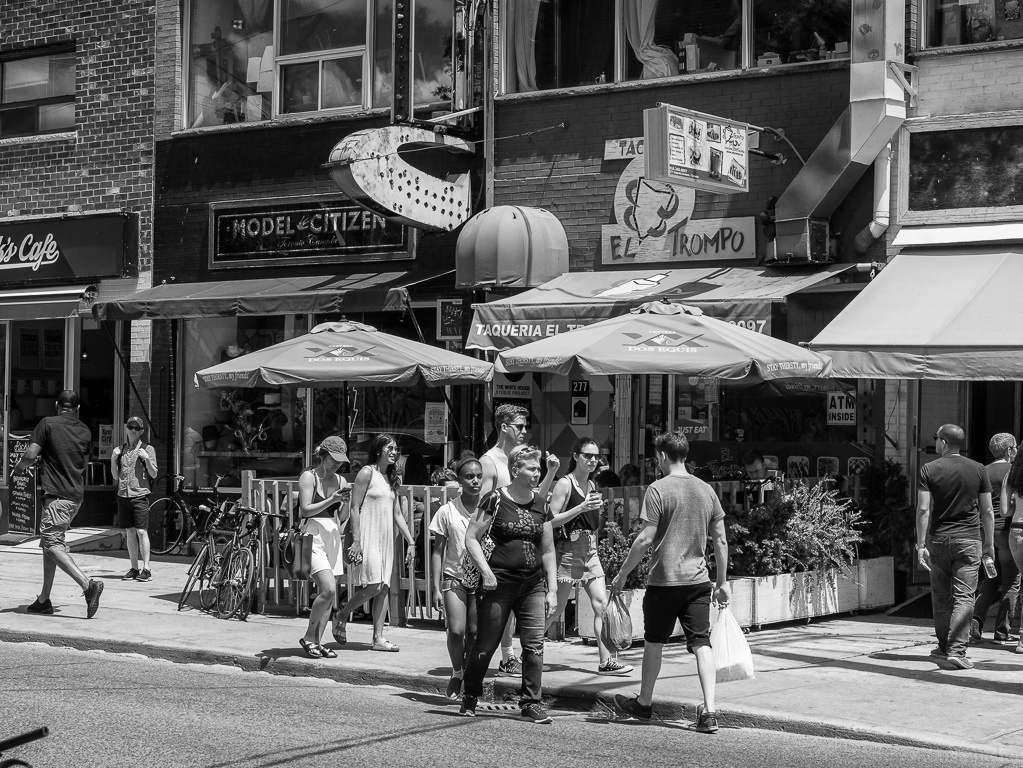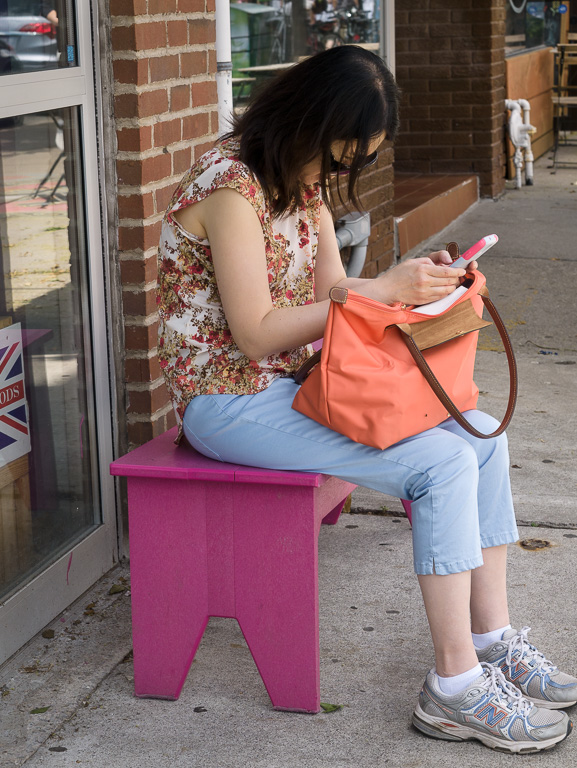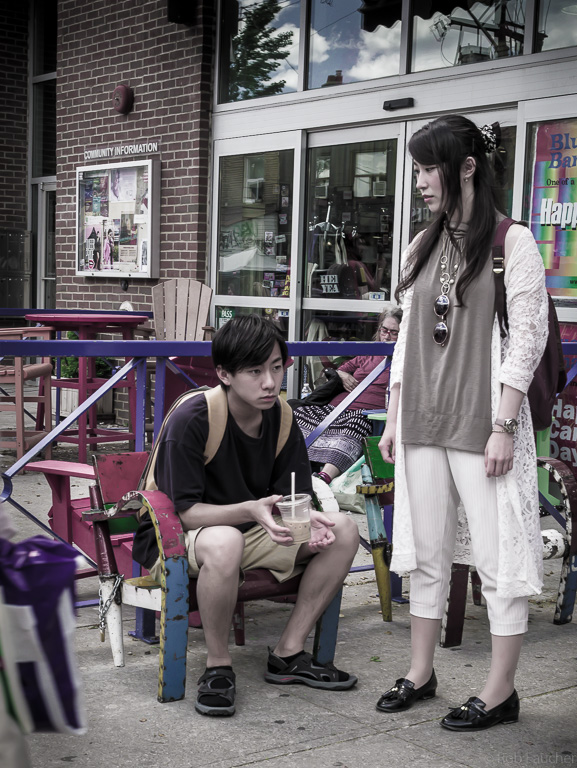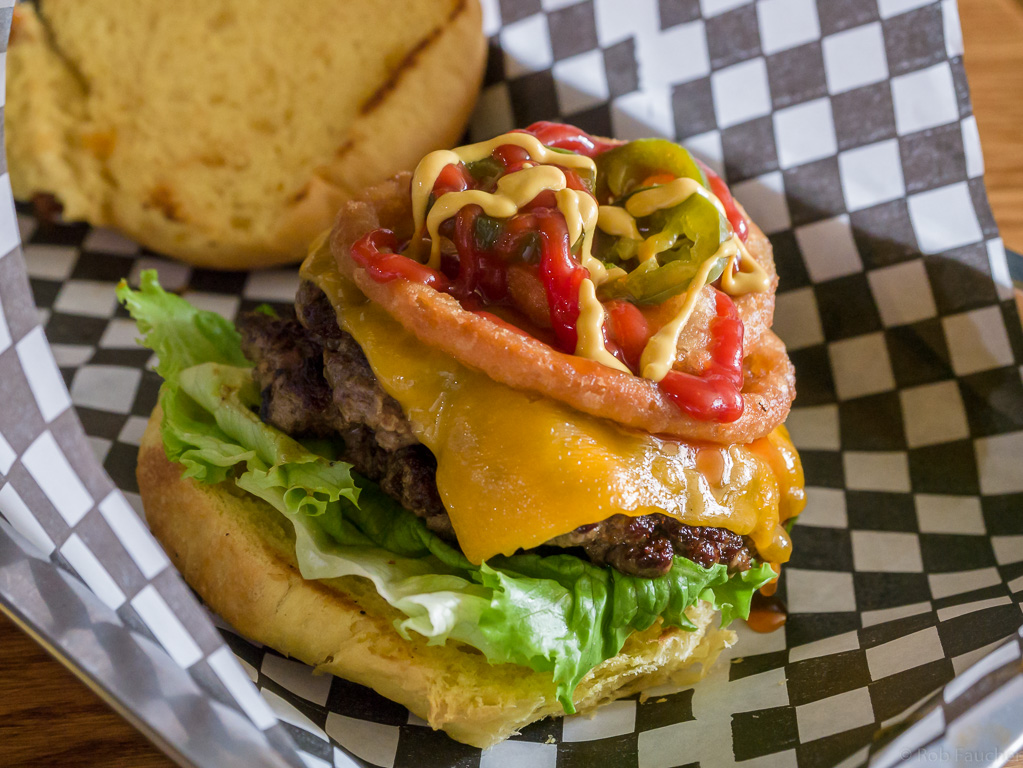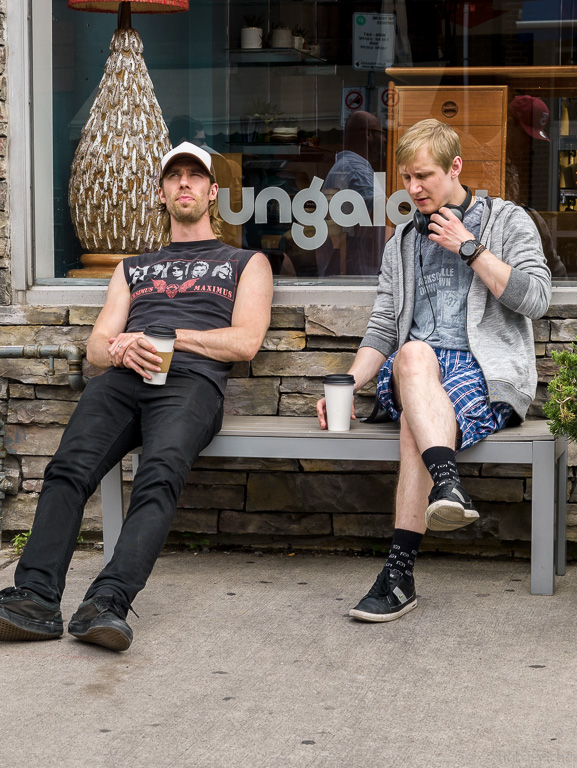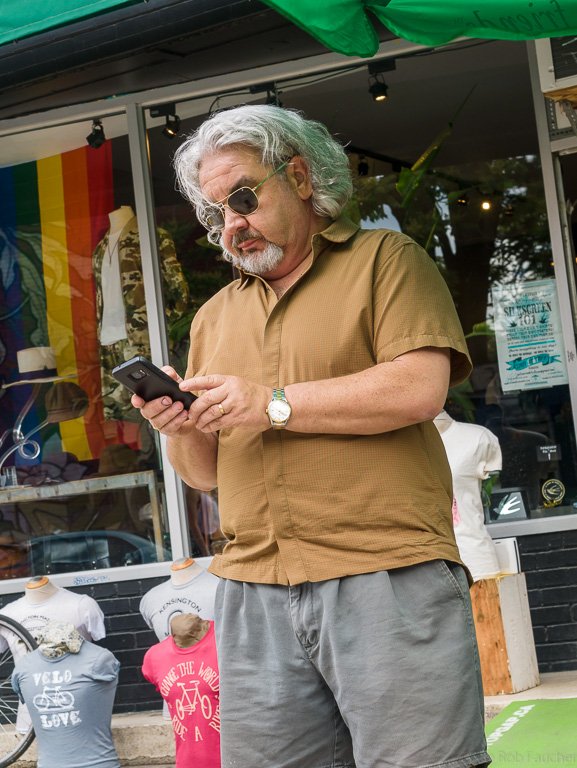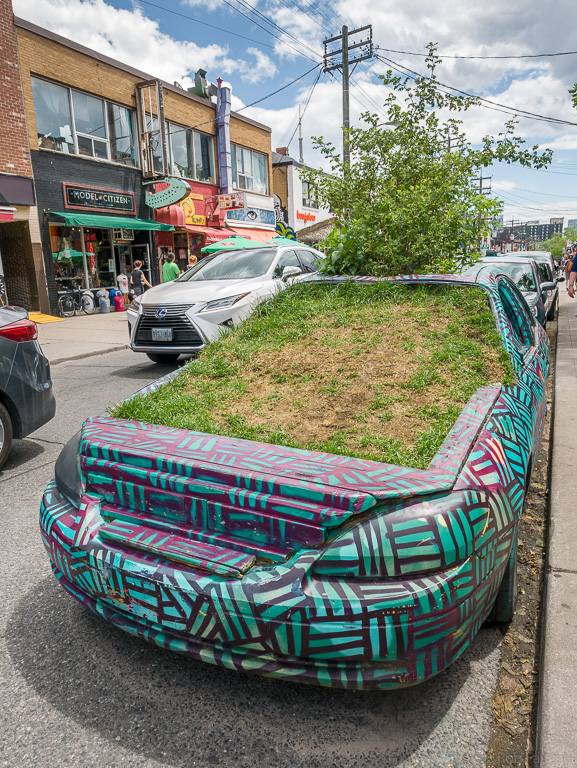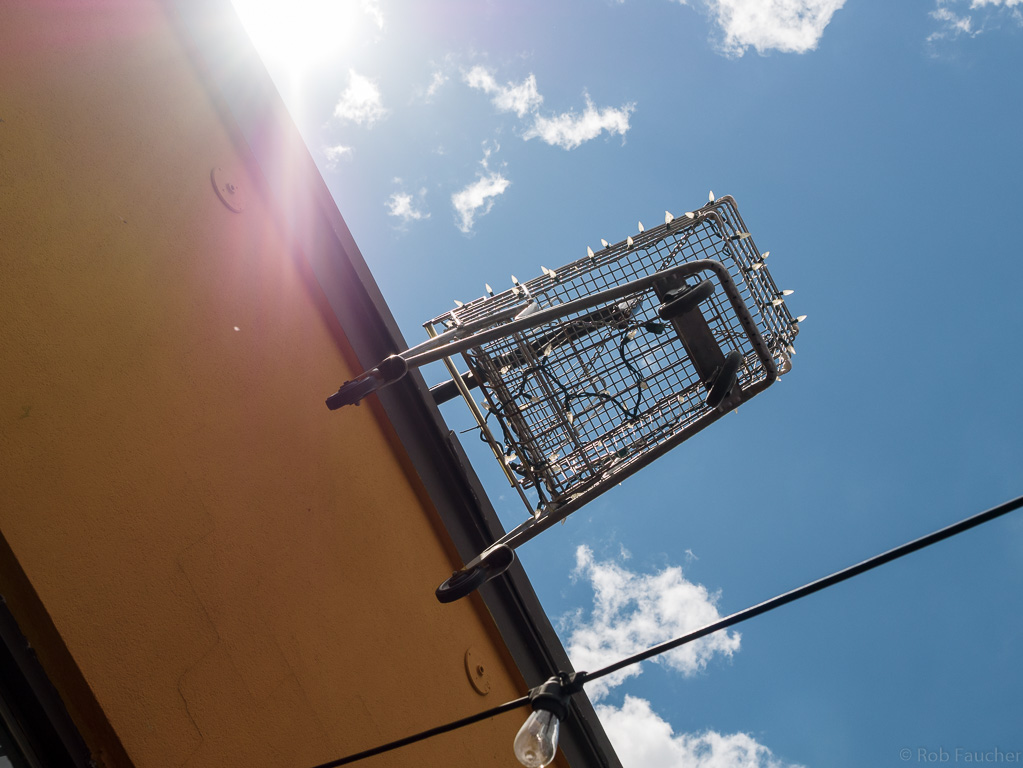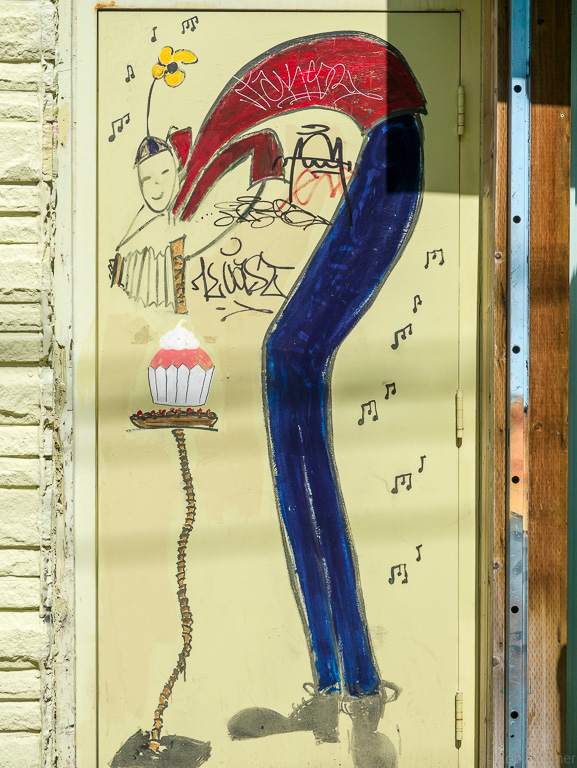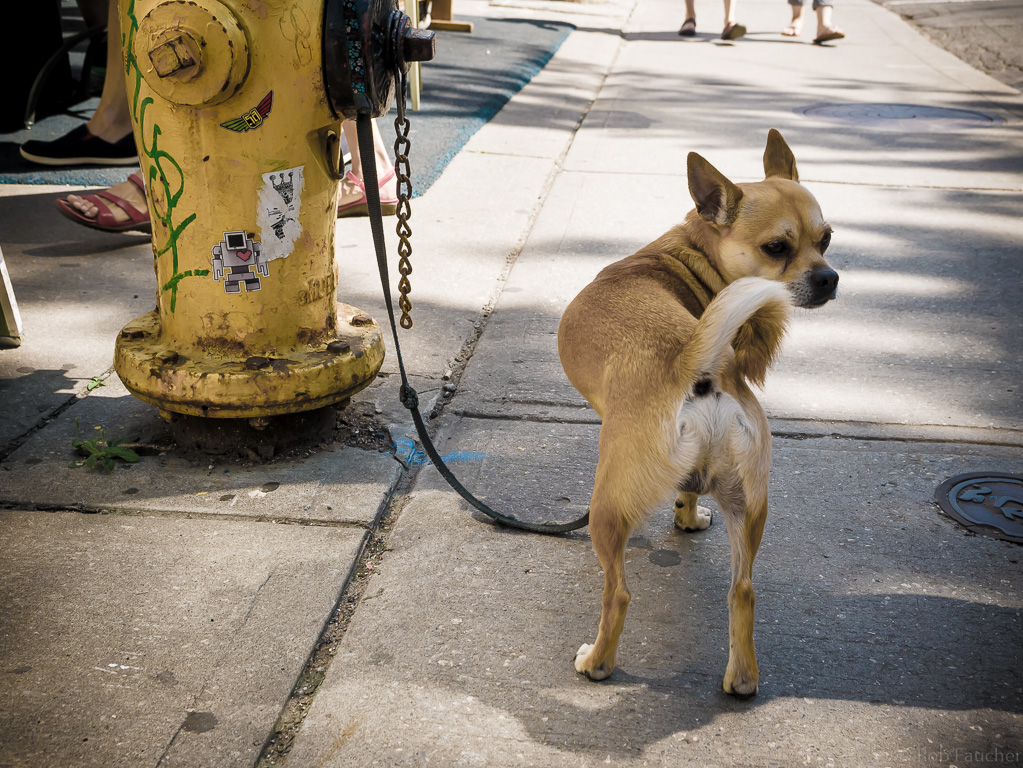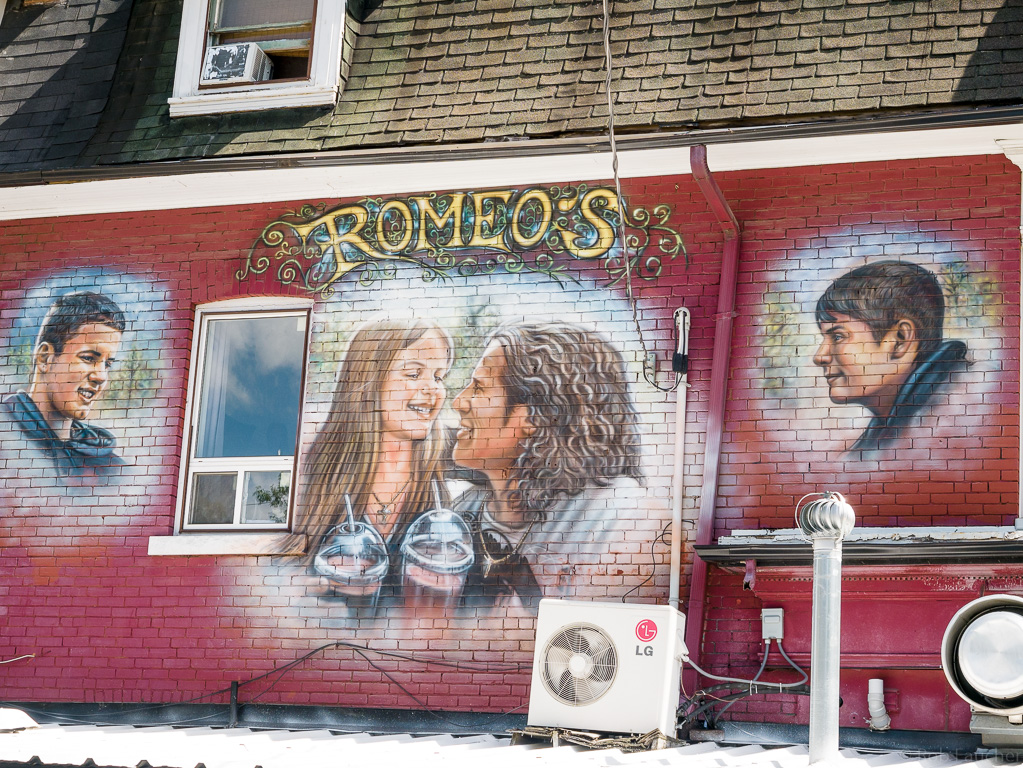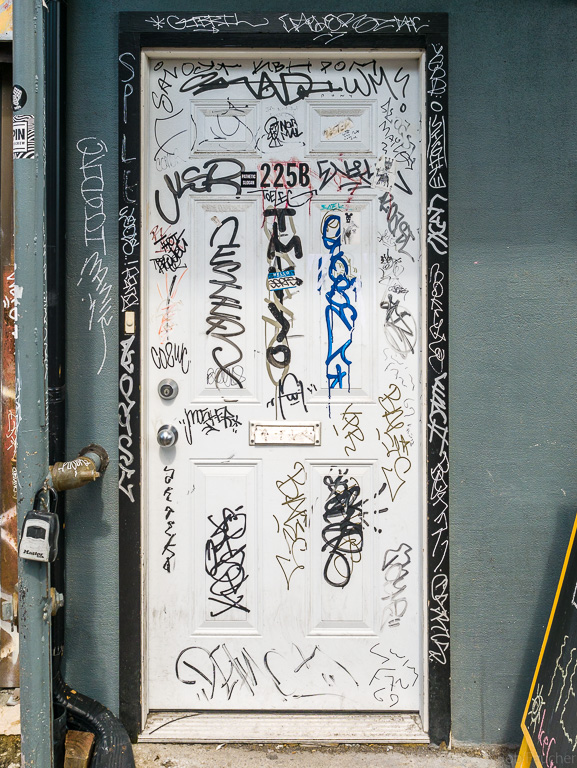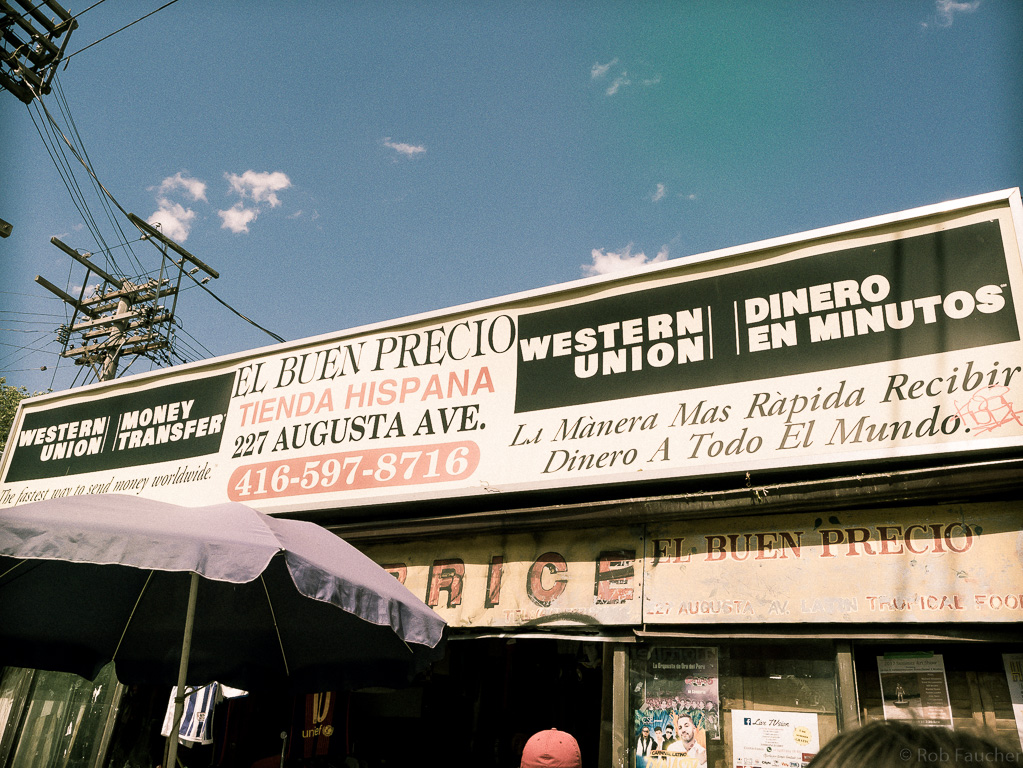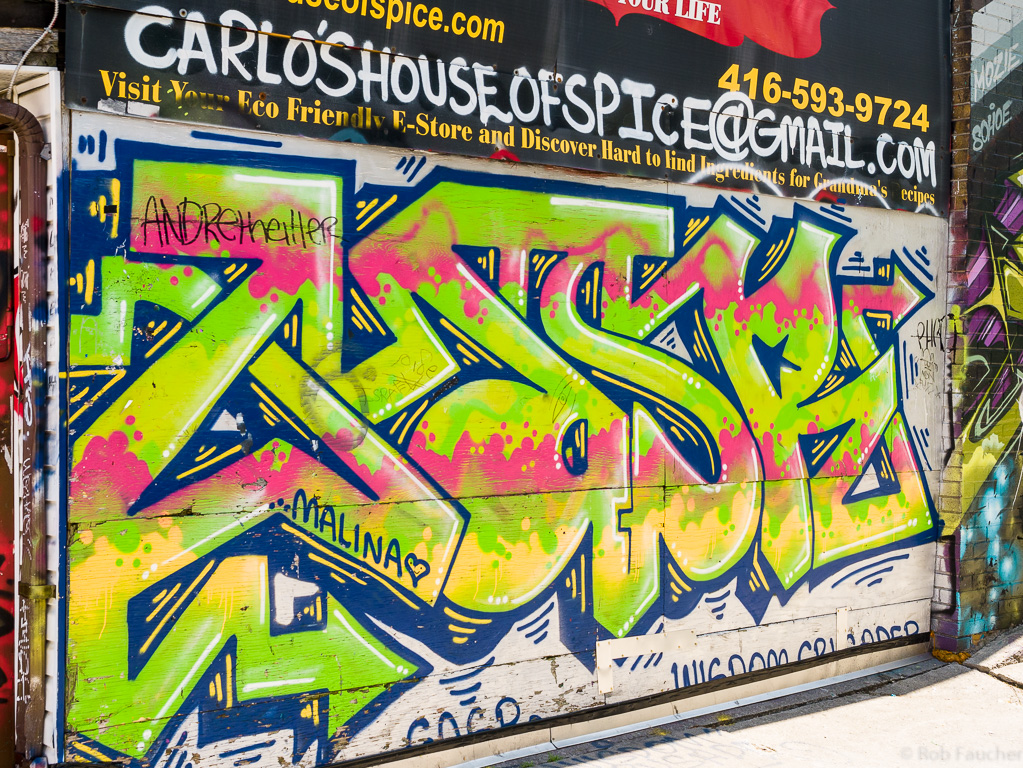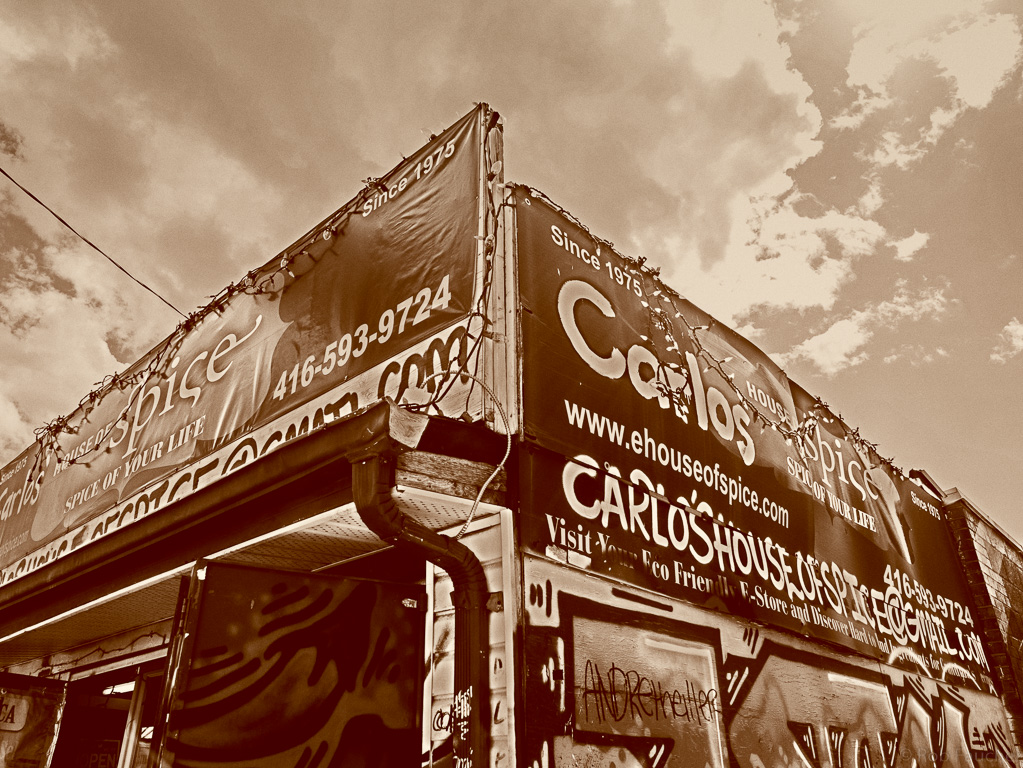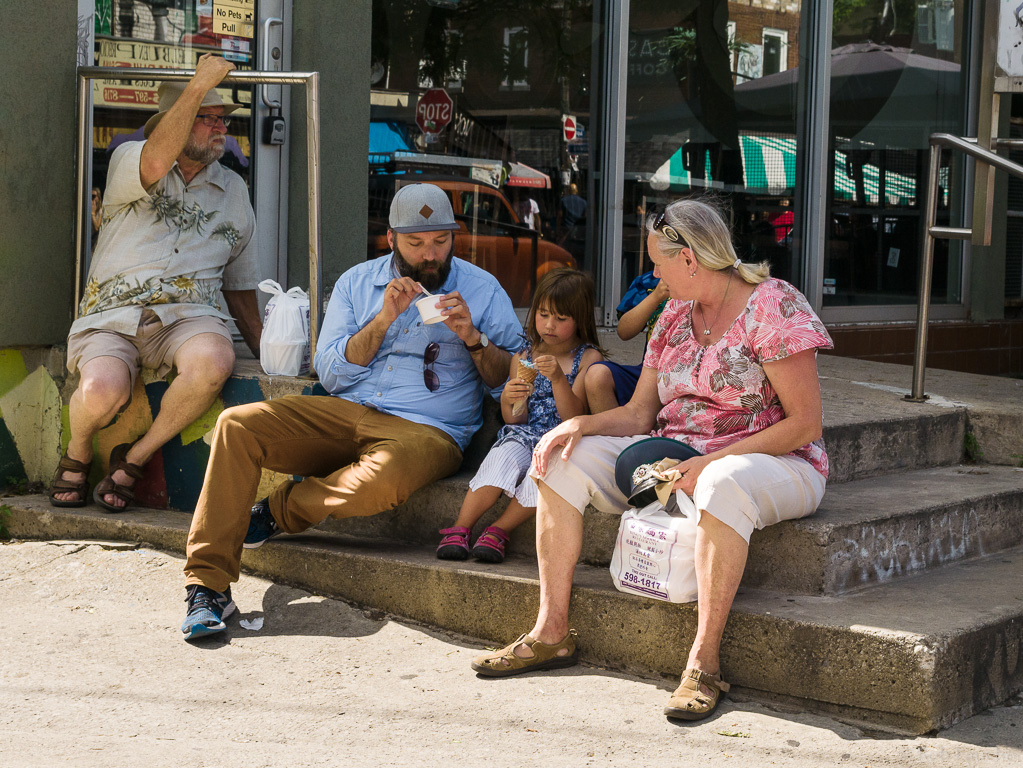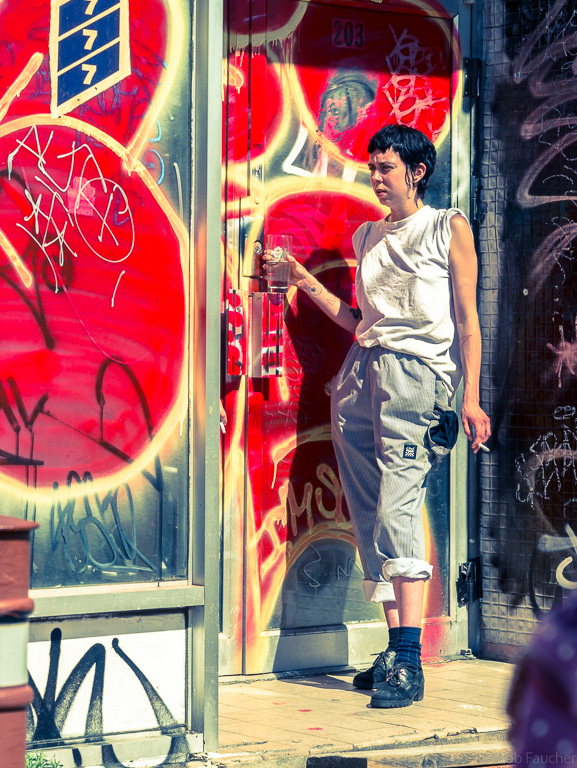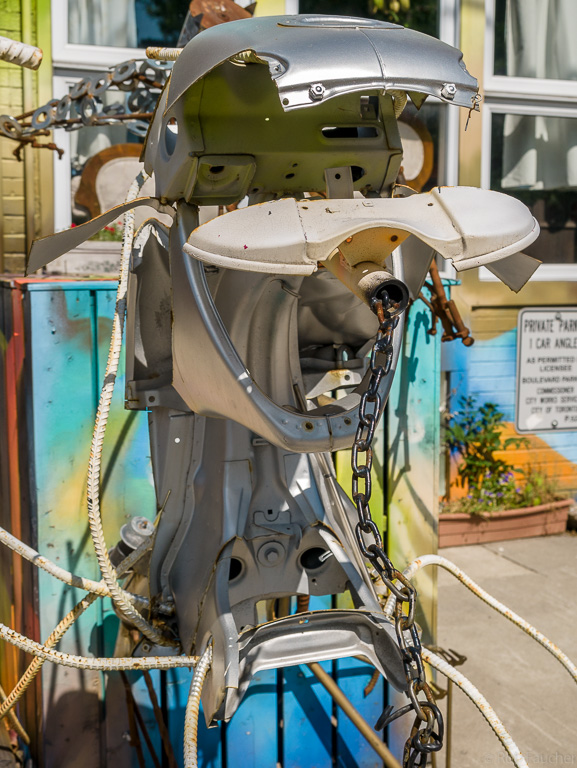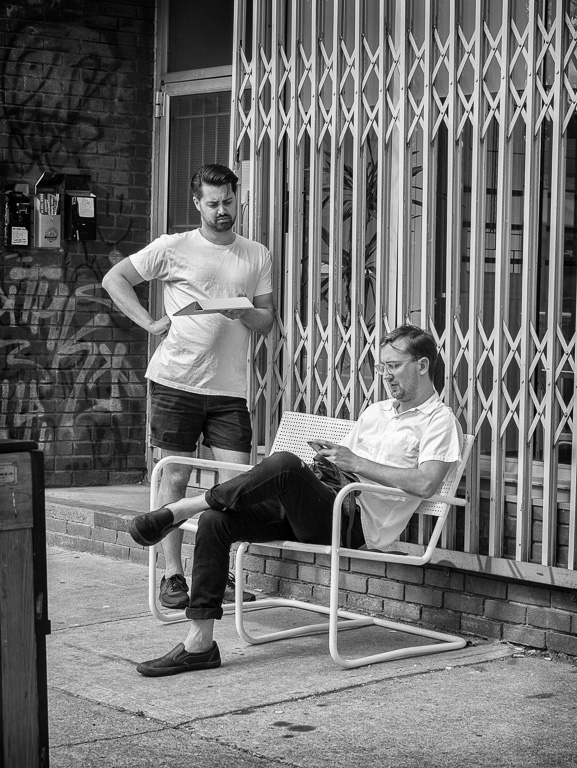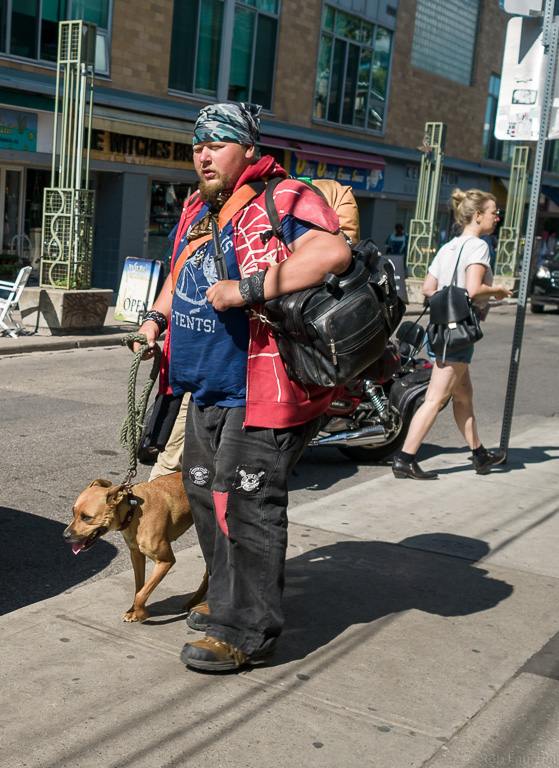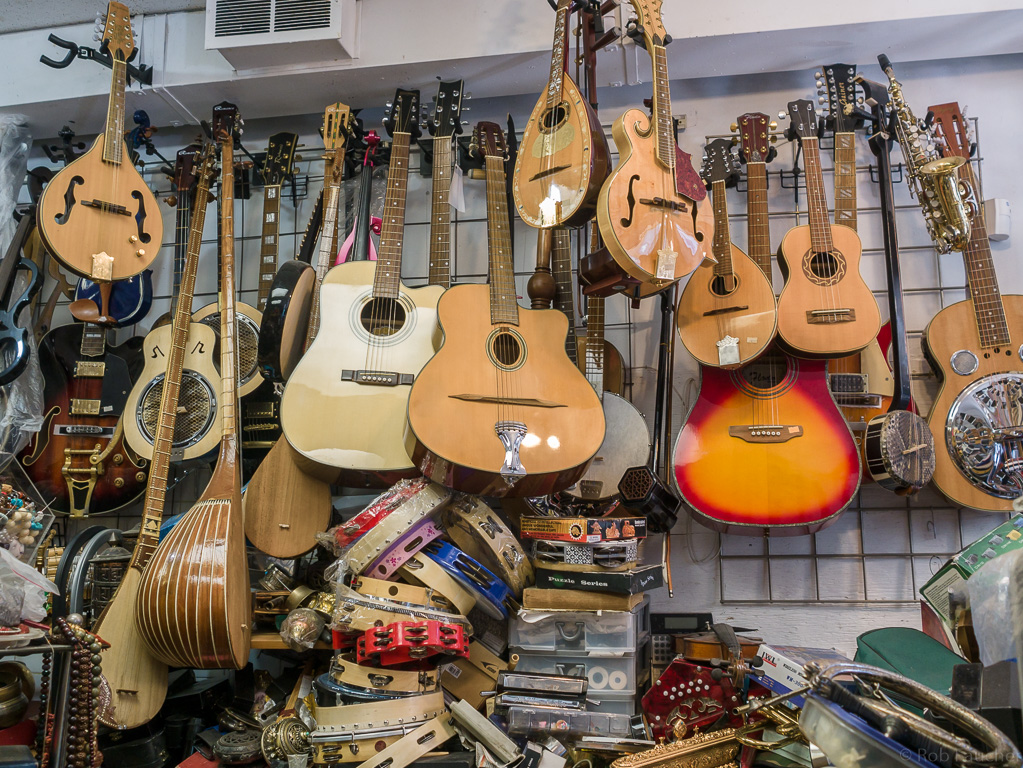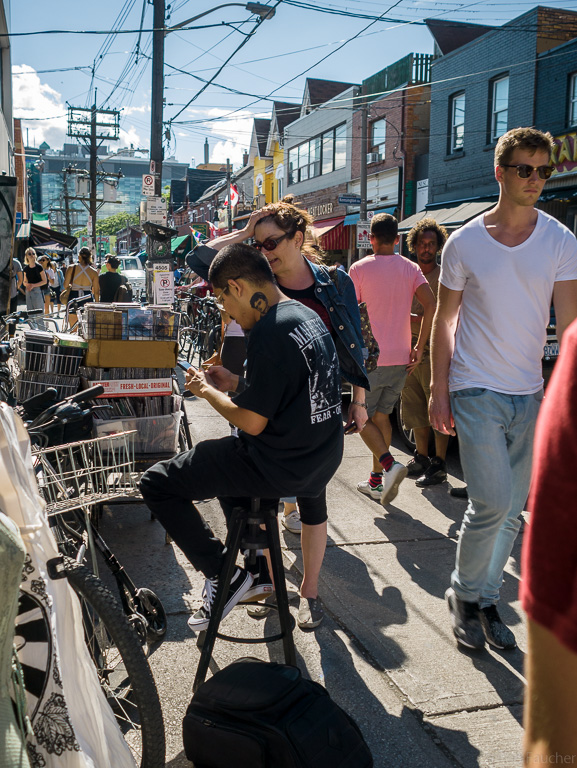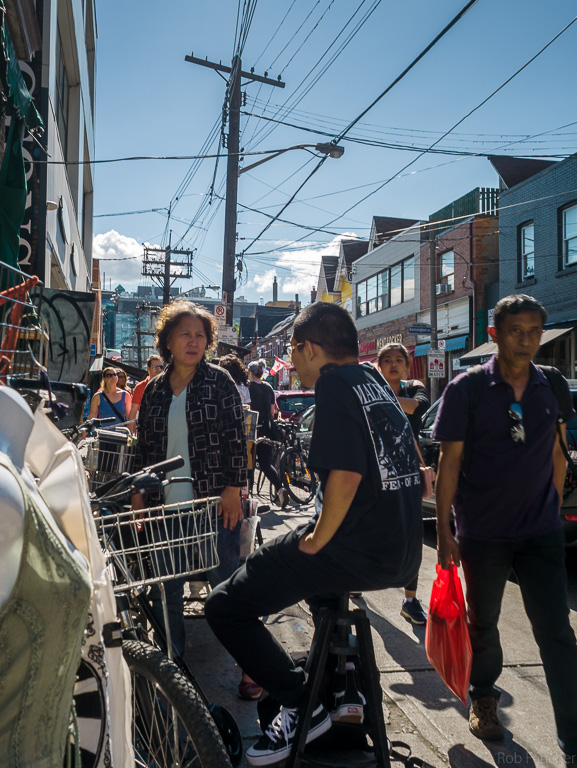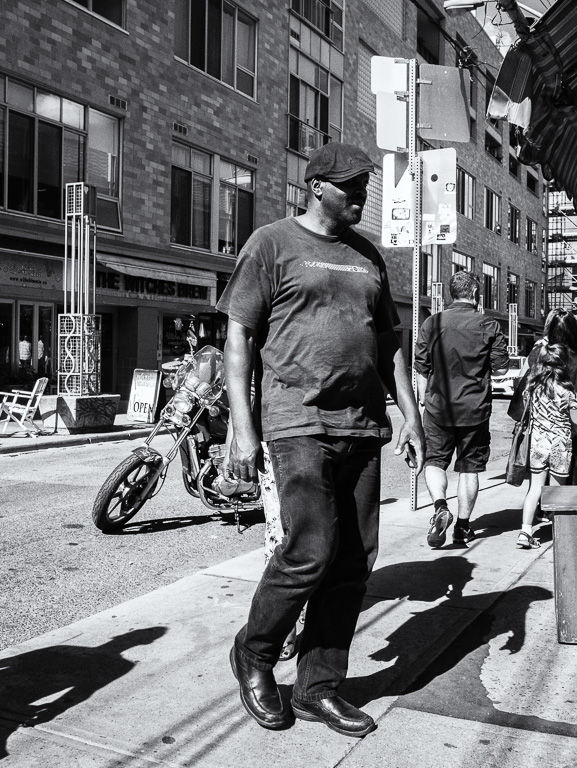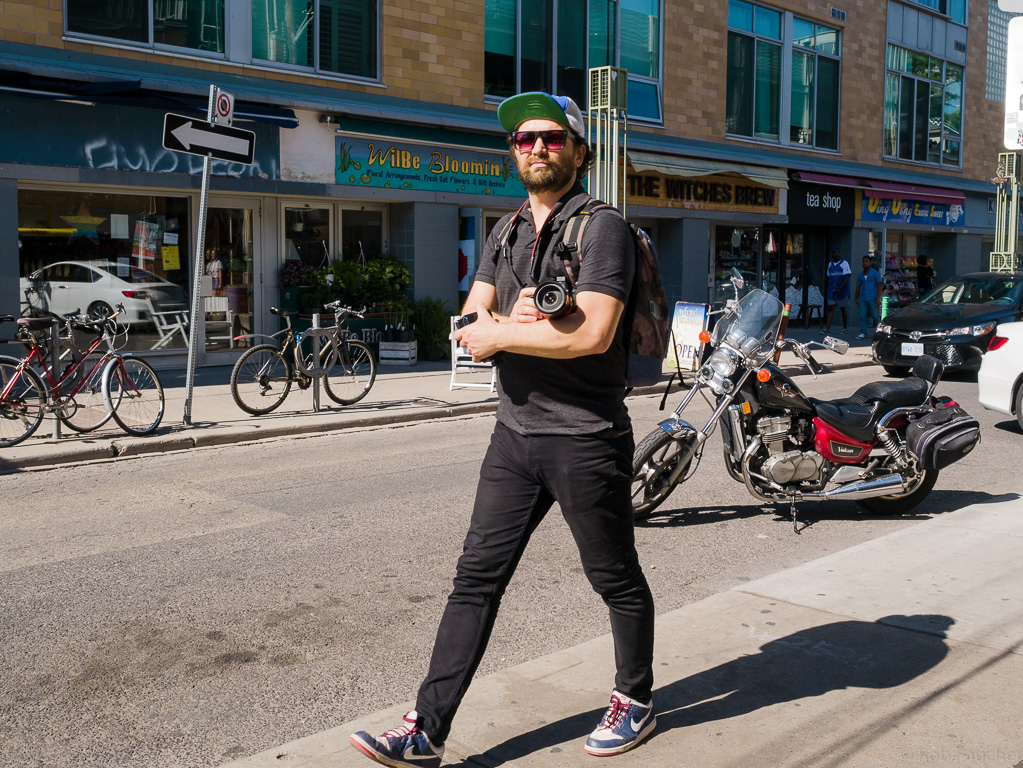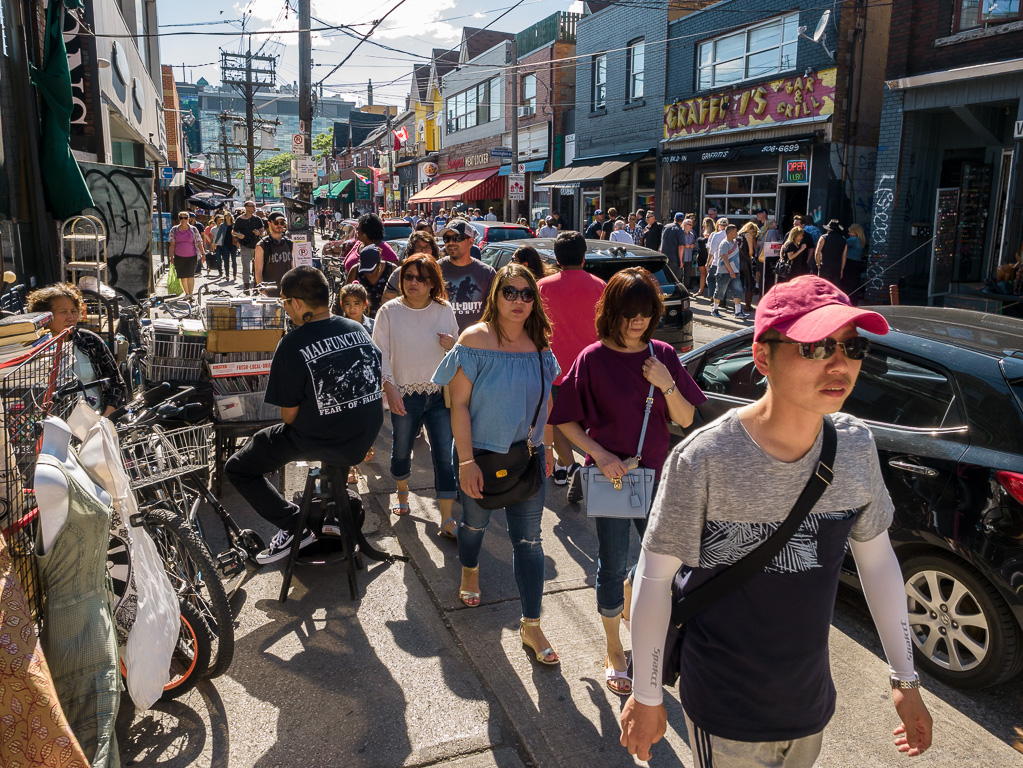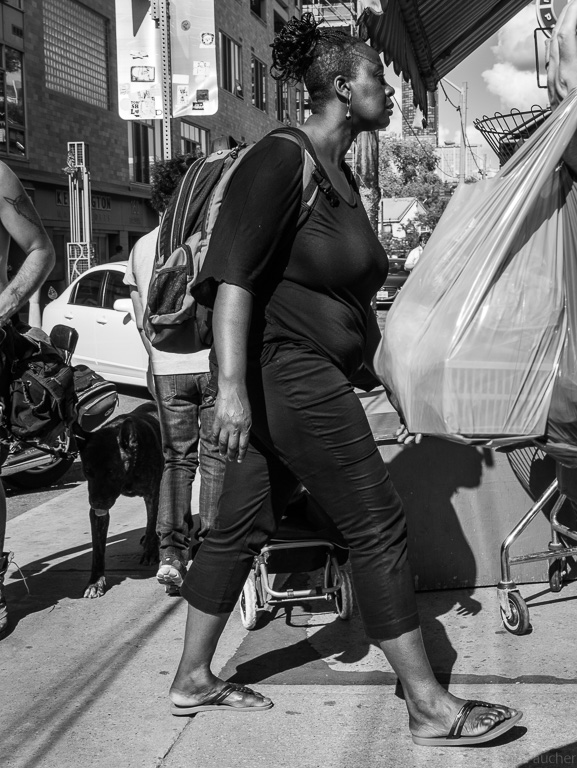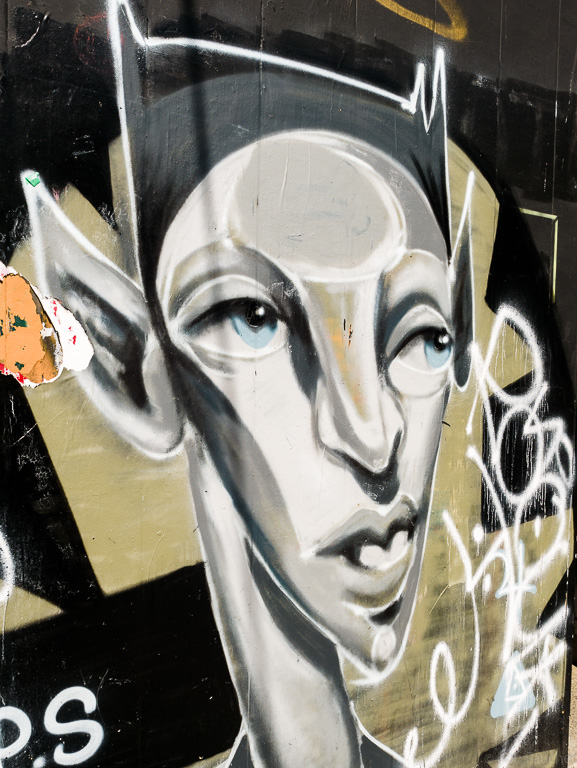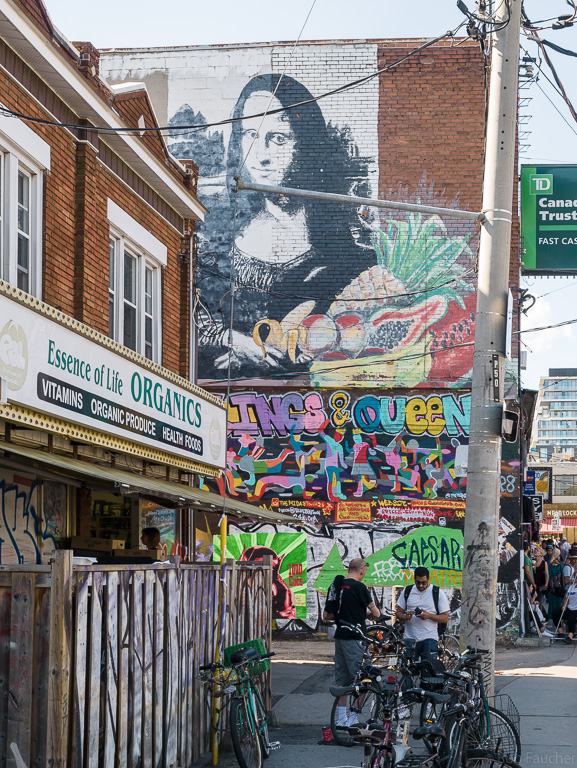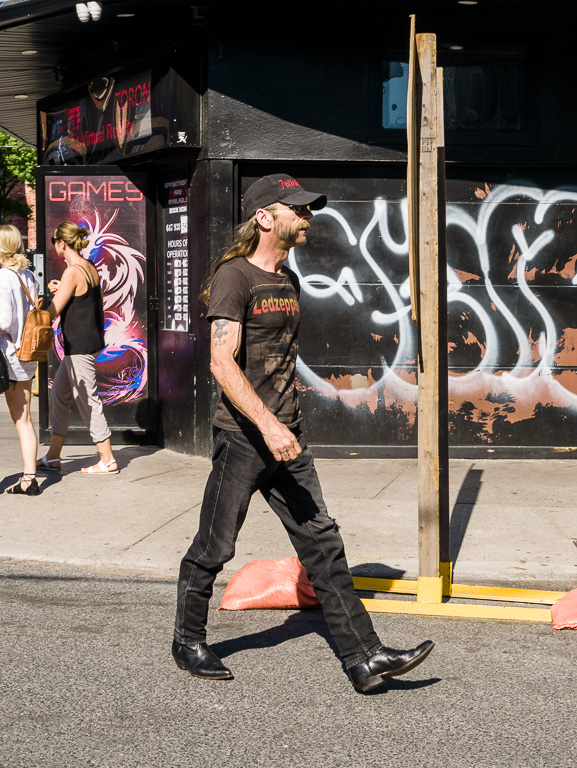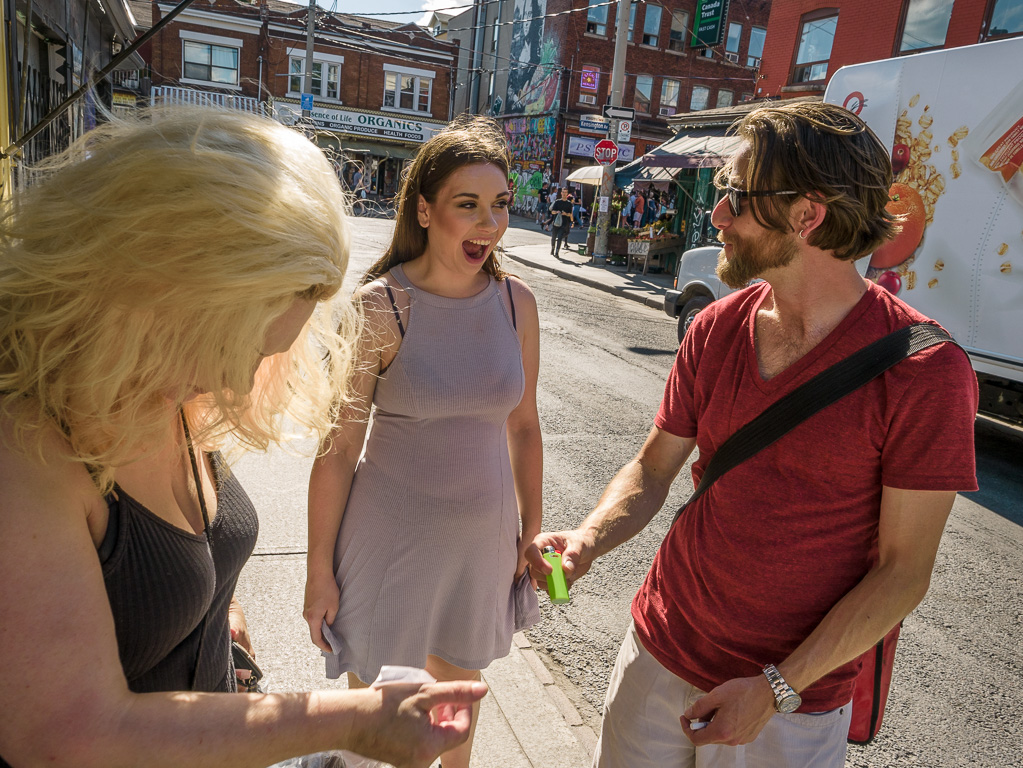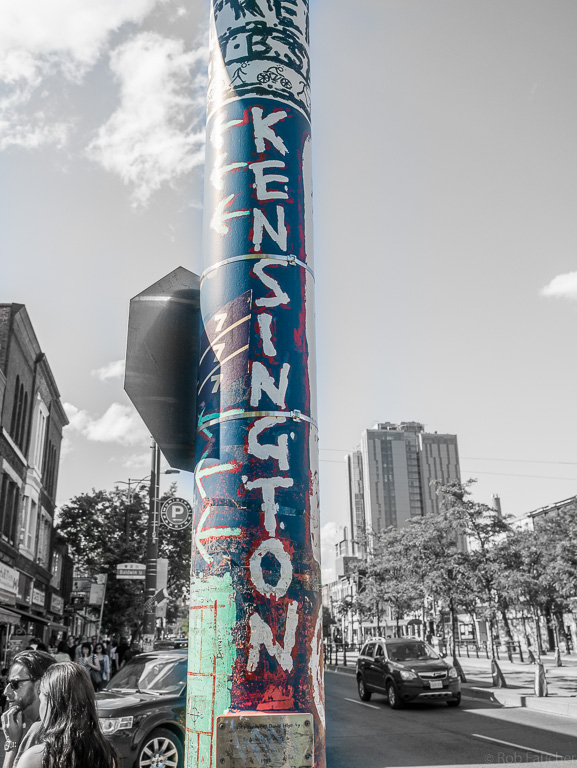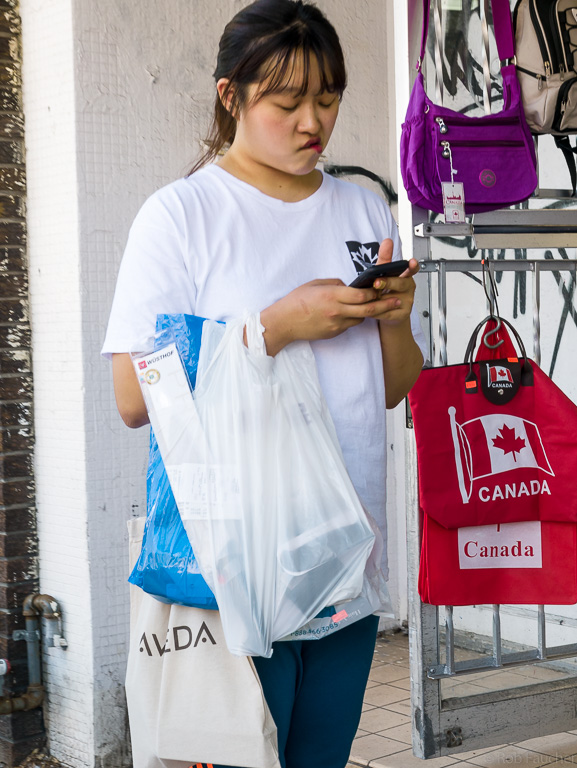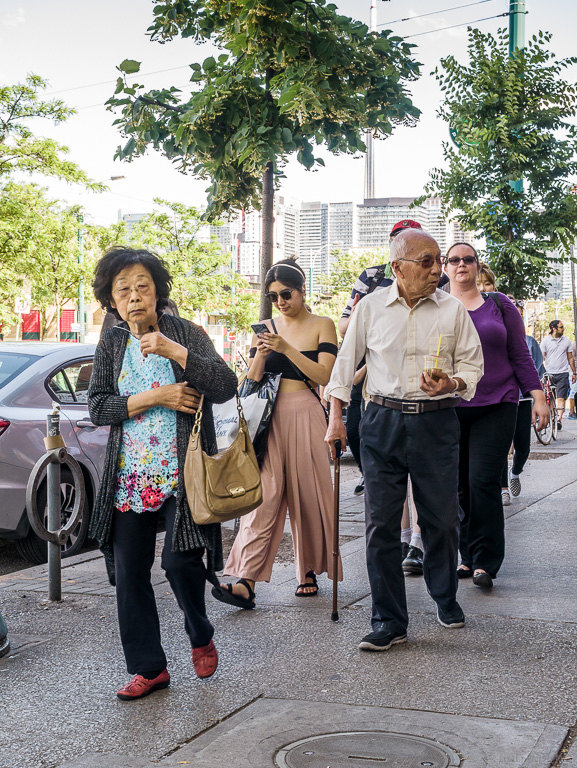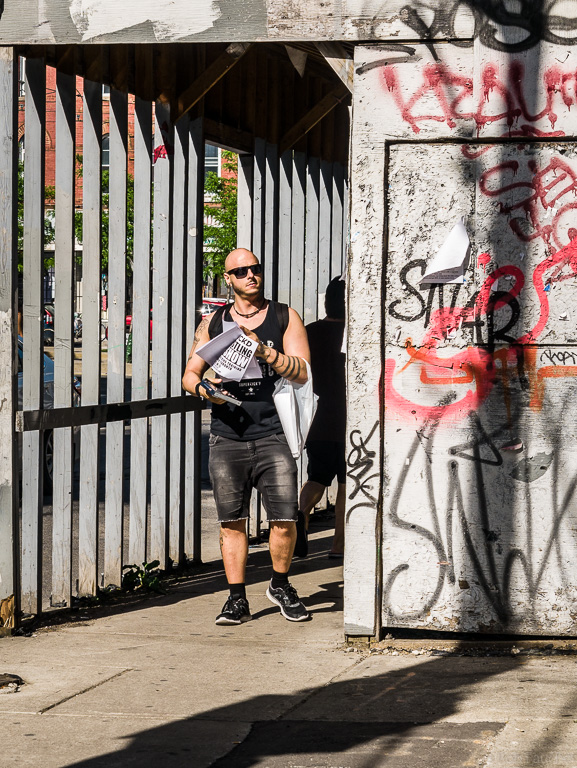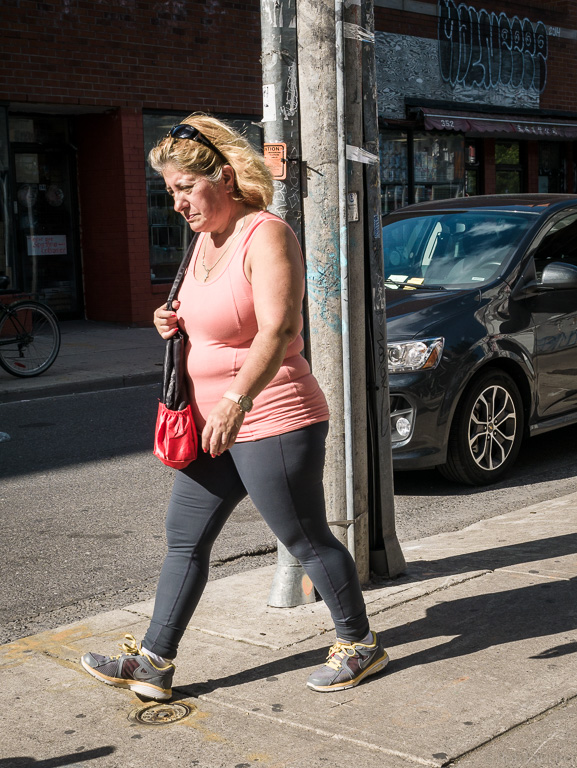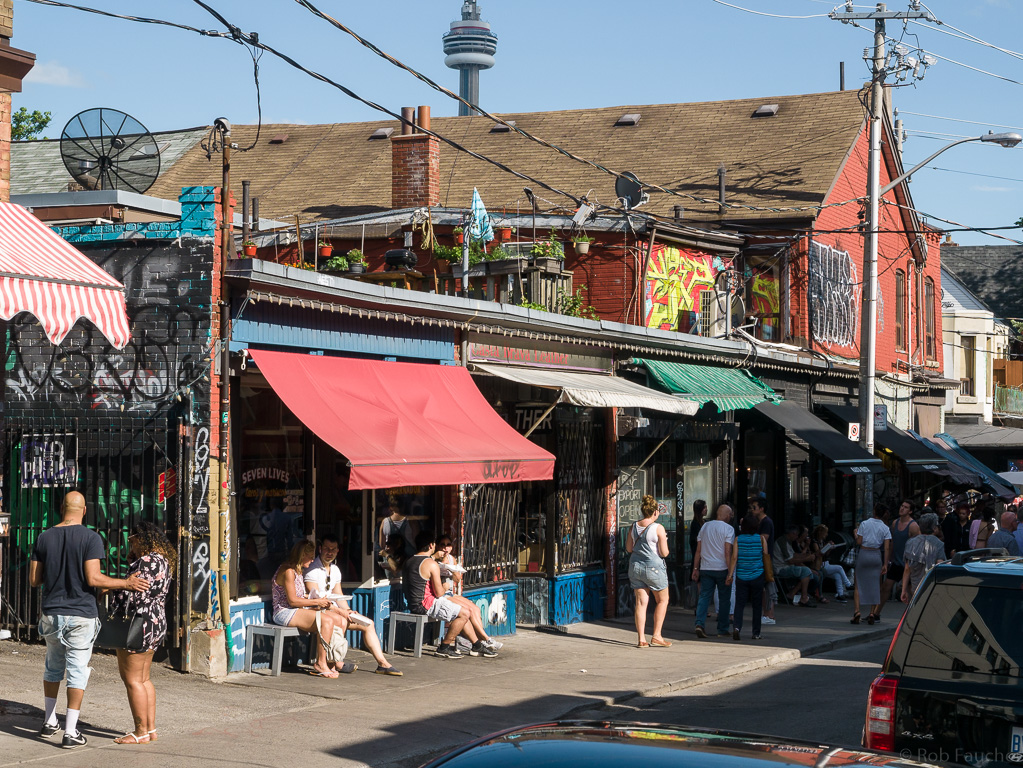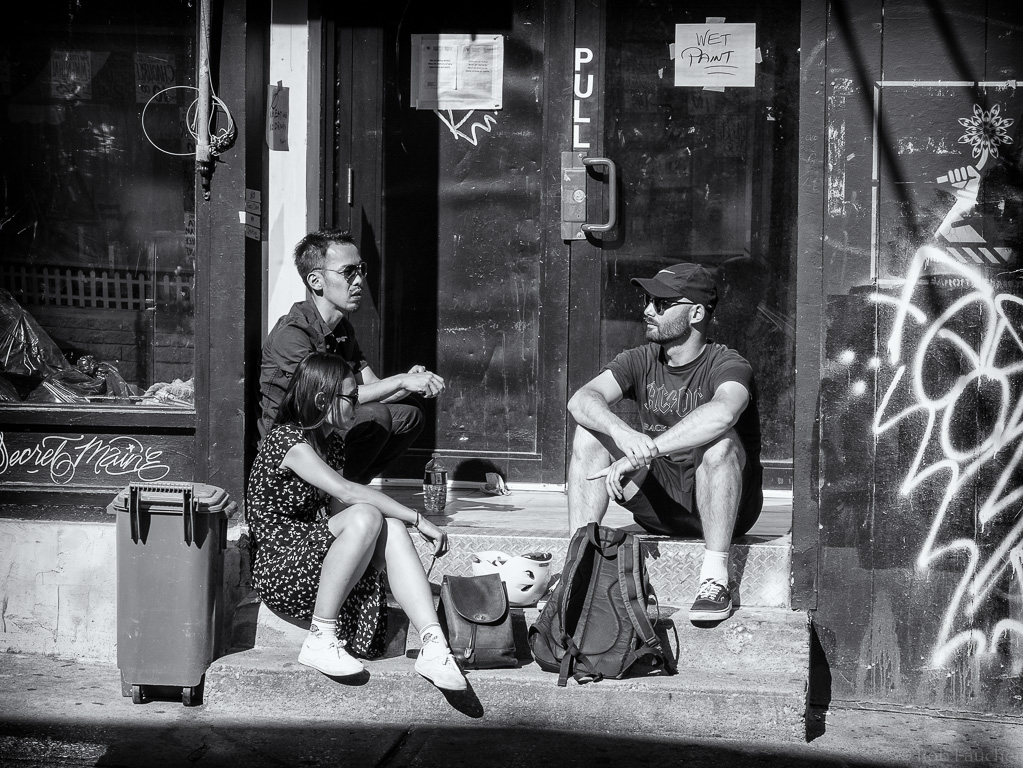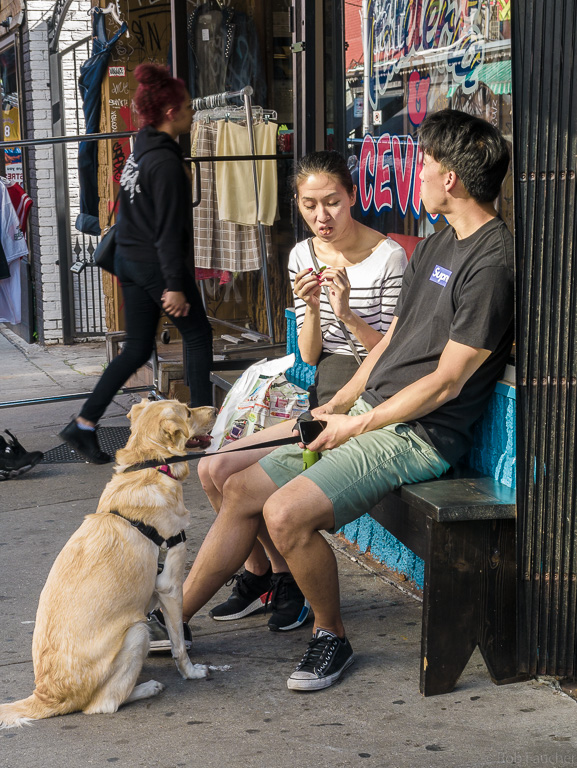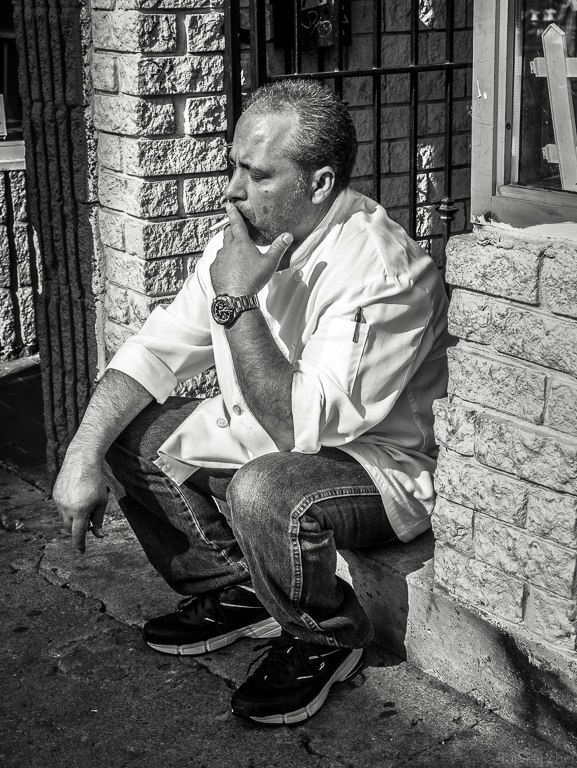I love walking around in Kensington Market, I really do.
It was a treat to take my wife, Melissa on her Birthday weekend to explore this historic Toronto enclave. Joining us, was her daughter, Bailey and boyfriend, Matt. Adding to the day’s fun was meeting up with Melissa’s oldest daughter, Brittani and her friend, Meagan, who were attending Pride Day. Moreover, Kensington Market always offers ample opportunity for street photography.
Kensington Market represents a sanctuary from uninspired blandness and business culture which unfortunately defines many areas of Toronto, which are crowded. The city is expensive, at times angry, congested and it lacks a deep sense of history and tradition that one finds in European cities. Toronto is also a prosperous, clean, modern, peaceful and safe city that adorns itself with a sprawling landscape of skyscrapers and condominiums.
From an architectural perspective, much of the city is boring, pragmatic, post-modern, homogenized and inflicted by a tyranny of right angled symmetry. Older buildings are often abandoned factories or businesses designed to fulfill the profit requirements of past generation’s bourgeoisie. Those buildings are either demolished or converted to luxury residences. In this accountant’s wet dream, the city prospers and grows. Its rational and calculated approach to attract business and foster sustained growth succeeds well, but does so at the expense of the soul and a classical sense of beauty.

These modern malaises are not the fault of Toronto nor its inhabitants, rather, it is the consequence of its intersection in history and all too recent ascendancy. Until the 1980’s, Toronto played second fiddle, both financially and culturally, to the much older and established City of Montreal. Toronto is now Canada’s first city and its fate entangled with the machinery of big money. Therein lies our historic intersection: the city reflects the unfettered advancement of a new world without the anchor of a long and troubled history. The logic of global trade and finance sooner or later homogenize all cultures and demands new growth complies to its needs. If Paris is the achievement of the artist, then Toronto is the achievement of the balance sheet.

For the first half of the 20th century, Toronto was that “second city” where one went to do business. It was serious, law abiding, politically stable, sober and sterile. Old Hogtown was overwhelmingly Anglo-Saxon, its founders were stoic, humourless British Tories and puritanical Scottish Presbyterians. No wonder Ernest Hemingway found himself despising Toronto during the 1920’s when employed as a correspondent for the Toronto Star. In a letter to Ezra Pound, written from his room at a Sherbourne Street hotel, he opined:
“It couldn’t be any worse. You can’t imagine it. I’m not going to describe it.[…] I have not had a drink in five days.” Of Torontonians he wrote, “We have come to the right place to have a baby because that is the specialite de ville. They don’t do anything else.”
Annoyed that purchasing candy from the drugstore was prohibited on Sunday, Hemingway wrote that Canada “is the fistulated asshole of the father of seven among Nations.” And Canadians, he claimed “are all merde [that is, shit].”
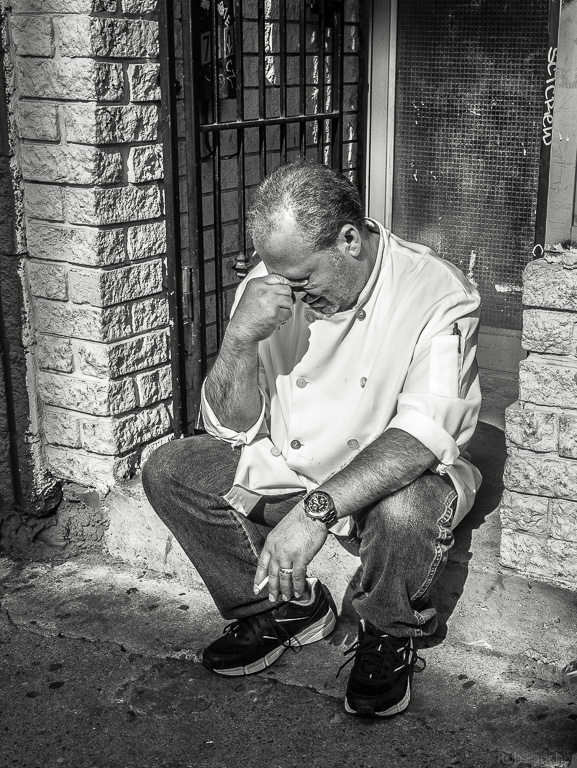
That rigid version of Toronto has changed in large measure thanks to multiculturalism and the collapse of Montreal as the financial and cultural centre of Canada after the 1976 Quebec referendum. The role of the aristocratic Tory and curmudgeonly Presbyterian are fading passages in the city’s history. Toronto is now a tolerant city welcoming all races, cultures, religions and sexual preferences. At times it is chaotic, unclean, perverse, drunk, stoned, conflicted and uncertain of its identity and status as a “world class city”. These cultural paroxysms are just what the city needed to wrench it away from the austere control of the old Anglo-Saxon masters. Hemingway’s old Canadian merde has lost its stench.
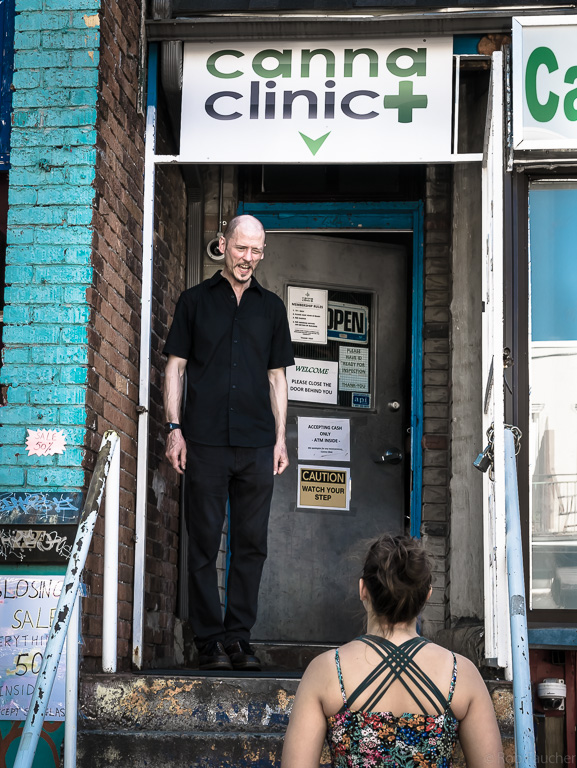
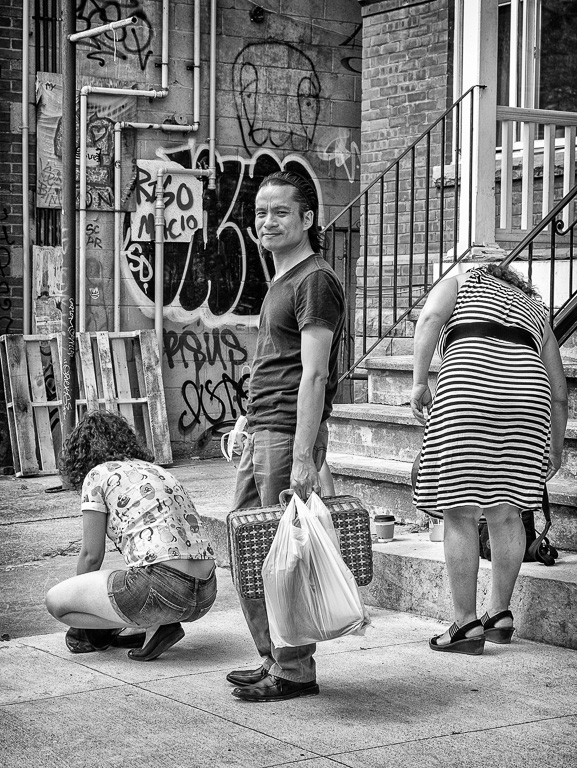
My love of Kensington Market comes from its confident sense of history as well as the harmonious collision of conspicuously different cultures and lifestyles. The buildings are old, unique and full of character. Its denizens are mainly young, but they live a local lifestyle that would be right at home in old Europe. One is likely to buy fish, vegetables, meats and clothing from at least 4 different vendors. It reminds me of my Grandparent’s long gone delicatessen and wine shop in Oostende, Belgium. All of it a far cry from the modern superstore when one can buy underwear, t-shirts, fruits, meats, electronics and condoms under one roof. The vendors in Kensington Market are one of kind, with no analog found elsewhere in the city. Each shop represents the idiosyncrasies of its owners, there is no uniformity and that is a beautiful thing.
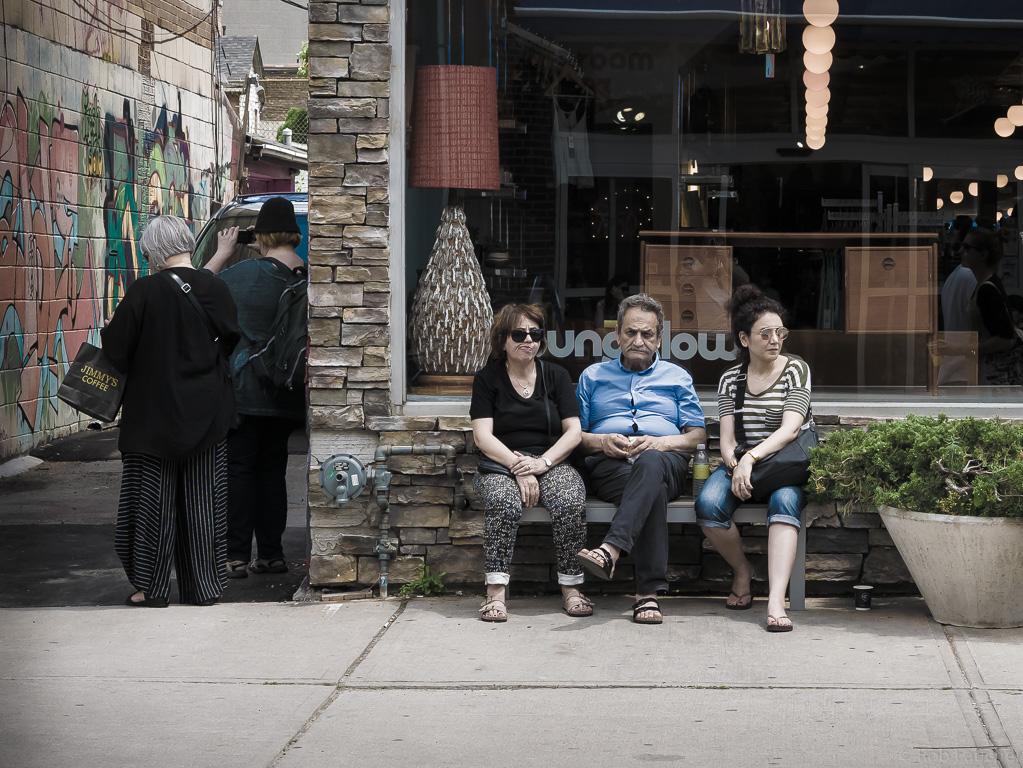
Kensington Market stubbornly resists the encroachment of the 21st century and corpocracy. Its streets are dispossessed of corporate logos, obnoxious billboards and men in suits. It is visually rich, confident, energetic and proud. It is a uniquely Canadian experience that in its own inexplicable way unifies the promise of benevolent multiculturalism with the surrealism of William S. Burrough’s Interzone.
And yes, you can purchase candy on a Sunday anywhere in Toronto.
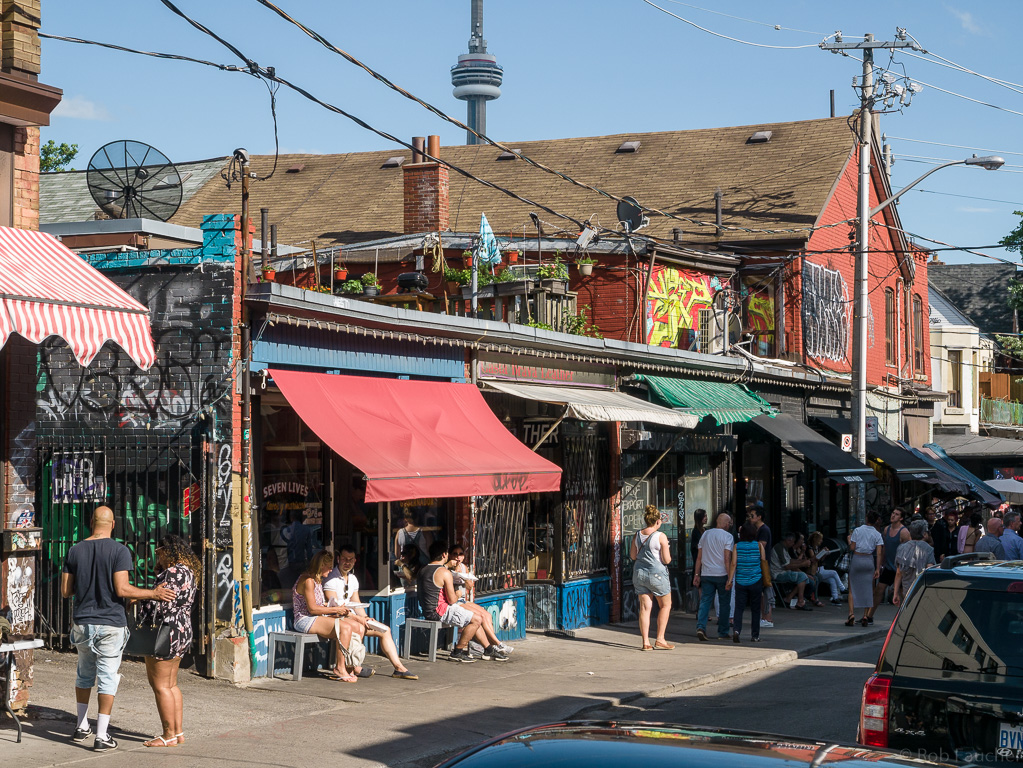
Hopefully my images below were able to capture the spirit of Kensington.


